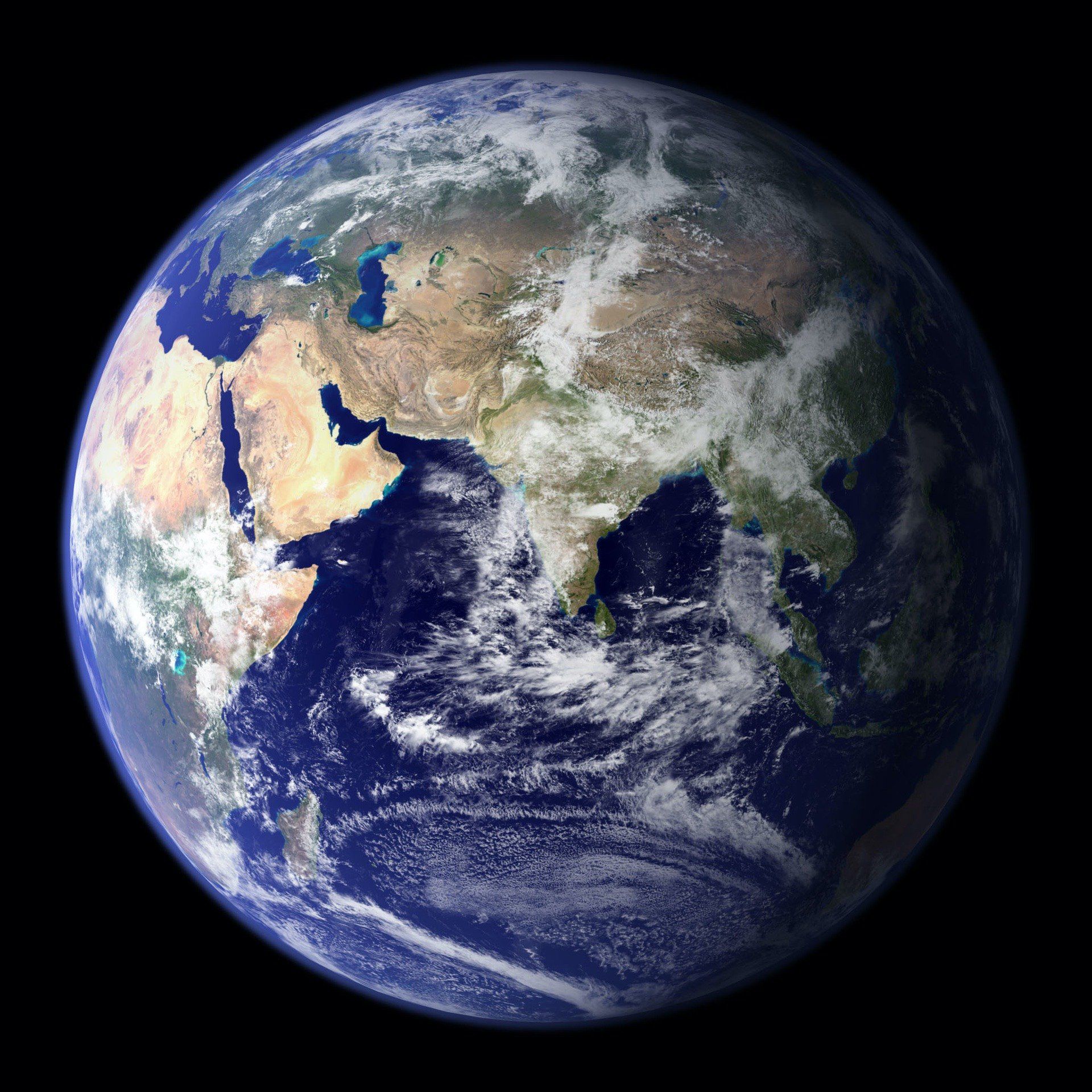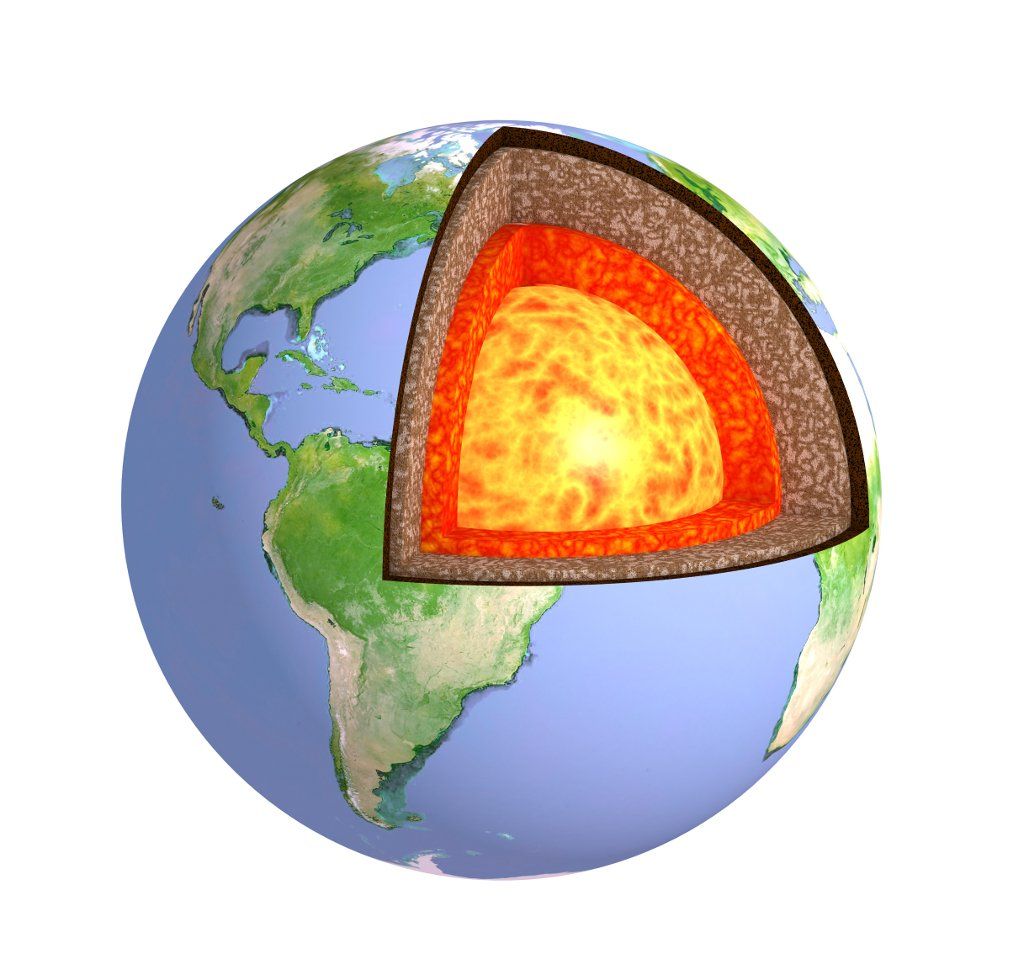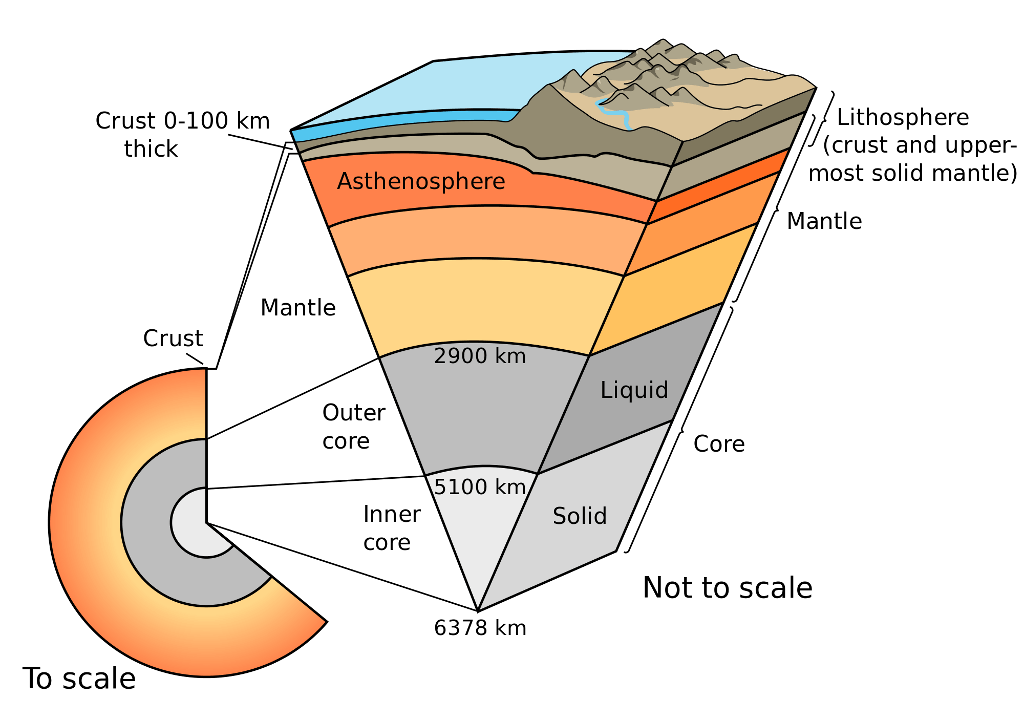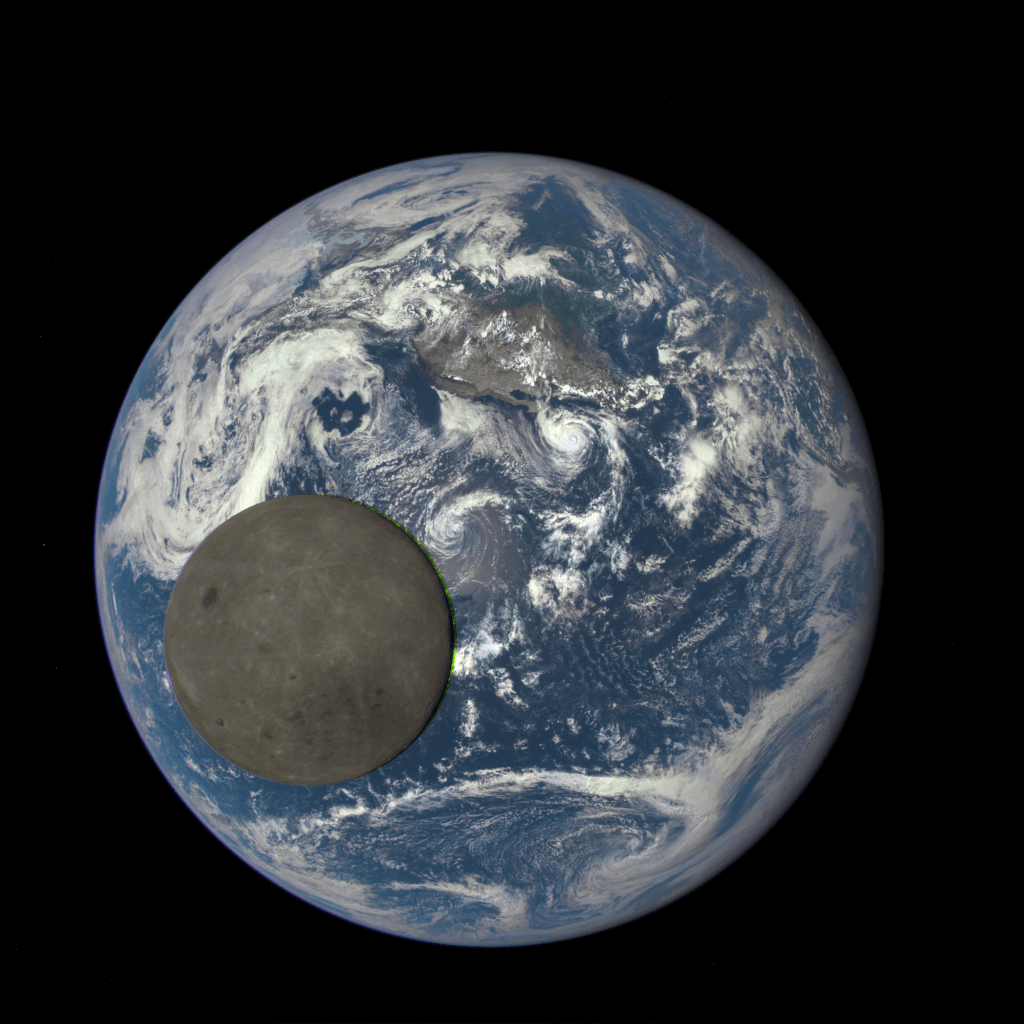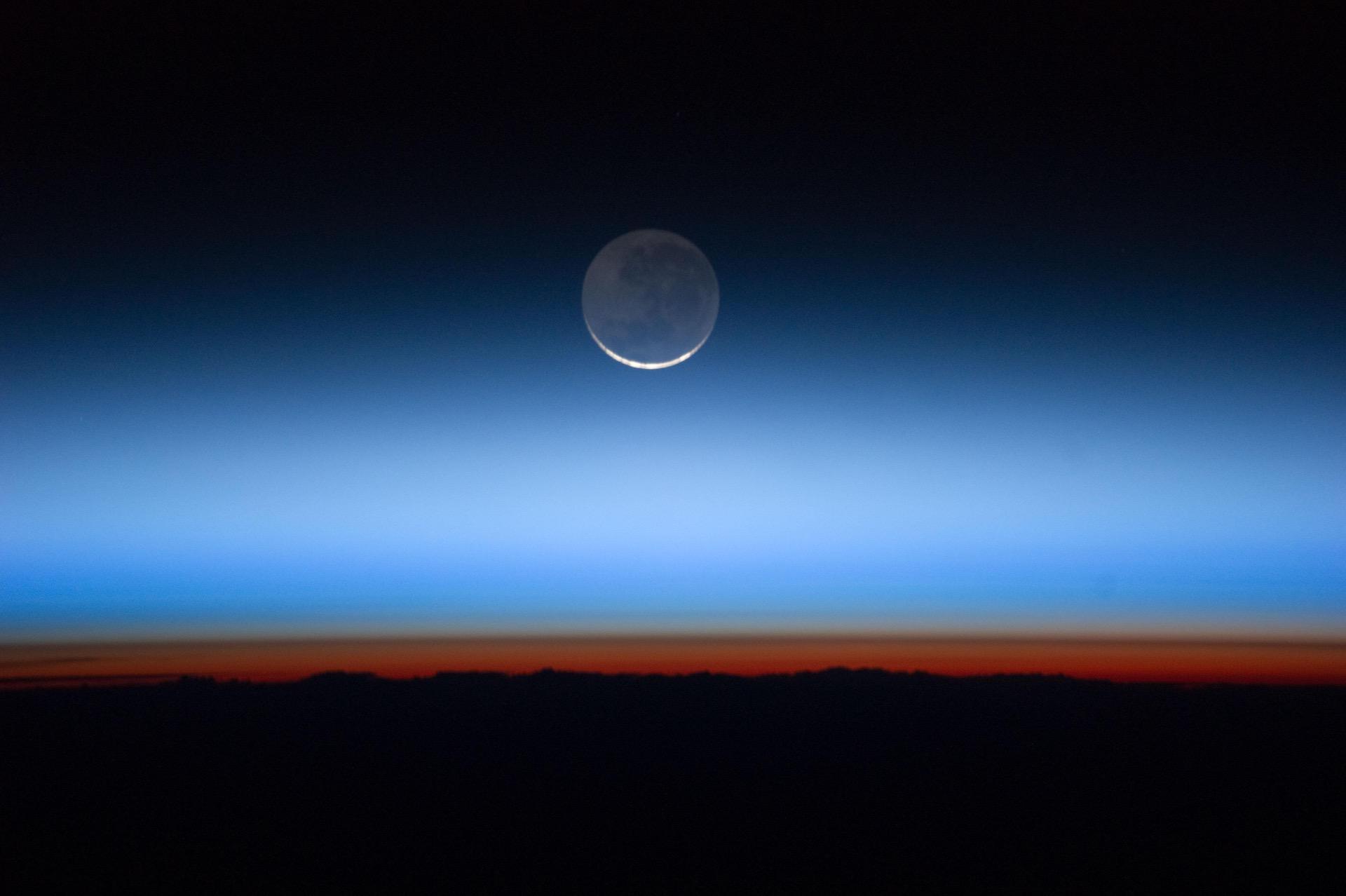This web page is created within BALTICS project funded from the European Union’s Horizon2020 Research and Innovation Programme under grant agreement No.692257.
Earth
Earth is the third planet from the Sun. It is the largest of the terrestrial planets in the Solar System. Our planet has a diameter of about 12,700 km. Terrestrial planets are stratified objects with a core composed mainly of iron and its compounds and outer layers composed of various silicates. The atmosphere is relatively thin.
It was perceived as a special object in ancient times most likely because the people who explored the world around them lived on Earth. It is the only planet whose name does not derive from ancient Greek or ancient Roman mythology. The Earth is a stratified object that has a core, a mantle and a crust. The core is made up of heavier elements, such as iron, while the crust is made up of lighter rocks, such as silicates.
The Earth’s magnetic field has formed because of the layers of different densities in the Earth’s interior, which rotate at different speeds. It protects the Earth by repelling particles ejected from the Sun and deflecting the solar wind.
Unlike other terrestrial planets, the Earth’s crust is not homogeneous but is made of plates floating on the molten rock of the mantle. The areas where the plates meet are those with many active volcanoes and where earthquakes occur more often.
The Earth is surrounded by a dense atmosphere composed mainly of nitrogen (78%) and oxygen (21%), with a very small mixture of other gases. The atmosphere has several layers: troposphere, stratosphere, mesosphere and thermosphere. The troposphere and stratosphere contain most of the atmosphere’s mass, and these layers are denser than the upper layers.
The atmosphere and the processes that take place in its layers effectively protect the Earth and its inhabitants from different “invaders” from space, both asteroids and harmful cosmic rays.
The Earth’s distance from the Sun, about 150 million km, and several other parameters ensure the existence of liquid water on our planet. This, in turn, is considered to be one of the main conditions required for life forms we know of to exist. So far, Earth is the only object in the Solar System and elsewhere in the Universe where we know life exists.
About 70% of the Earth’s surface is covered by water, concentrated mainly in the oceans. On Earth, there is salt water, fresh water, in three states: liquid, solid and gas. Our planet is the only known cosmic object where water is present in three states. Water not only supports the processes essential for life but also serves as a thermoregulator. Water and its ability to move from one state of matter to another are some of the most powerful driving forces for erosion.
It is most likely that there were many more planetesimals in the early Solar System. Their orbits were unstable and often collided with each other. Some planetesimals were destroyed. Now we know that the Solar System consists of the Sun, eight planets, four of which are terrestrial planets and four of which are giant or gas planets, and a huge number of smaller objects such as asteroids, dwarf planets and comets. Some planets have natural moons.
The Sun and its sisters formed an open cluster where the stars were scattered. Gravity could not hold them together. The Sun and the other stars of this cluster gradually drifted apart, disappearing into the vast expanse of the Milky Way Galaxy.
The Solar System now is about 25,000 light-years away from the centre of the galaxy in so-called Orion Arm. The Sun and the planets orbit the centre of the Galaxy. One orbit takes about 220 million Earth years.
